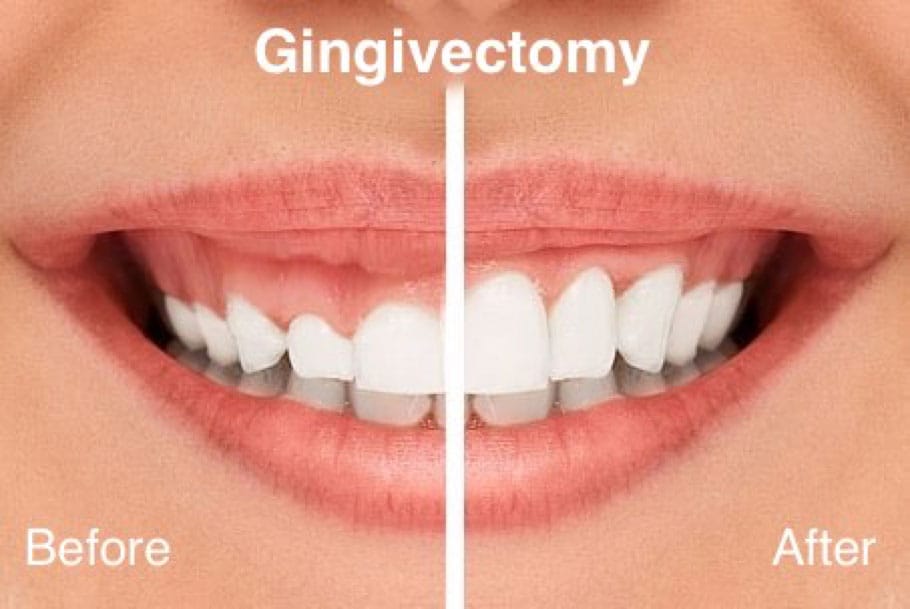
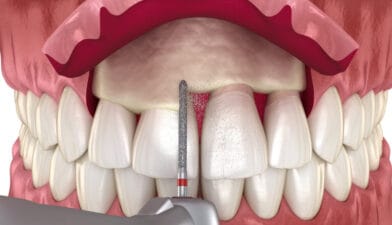
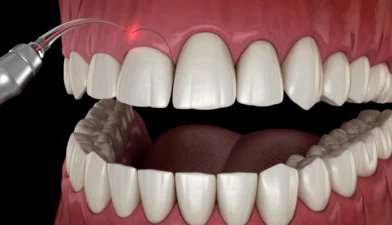
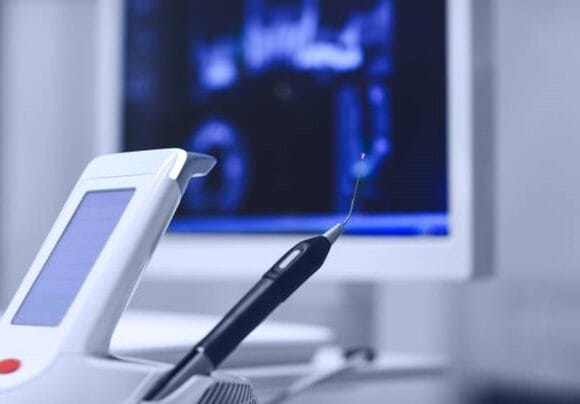
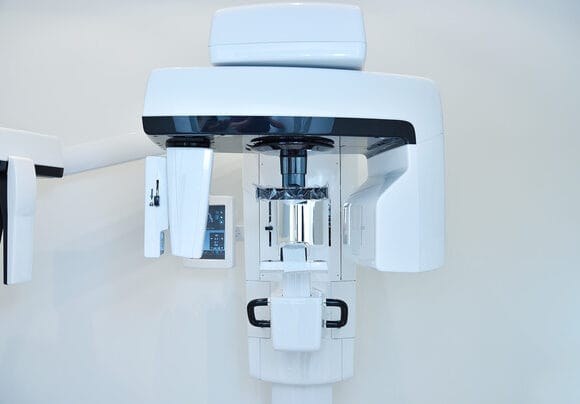
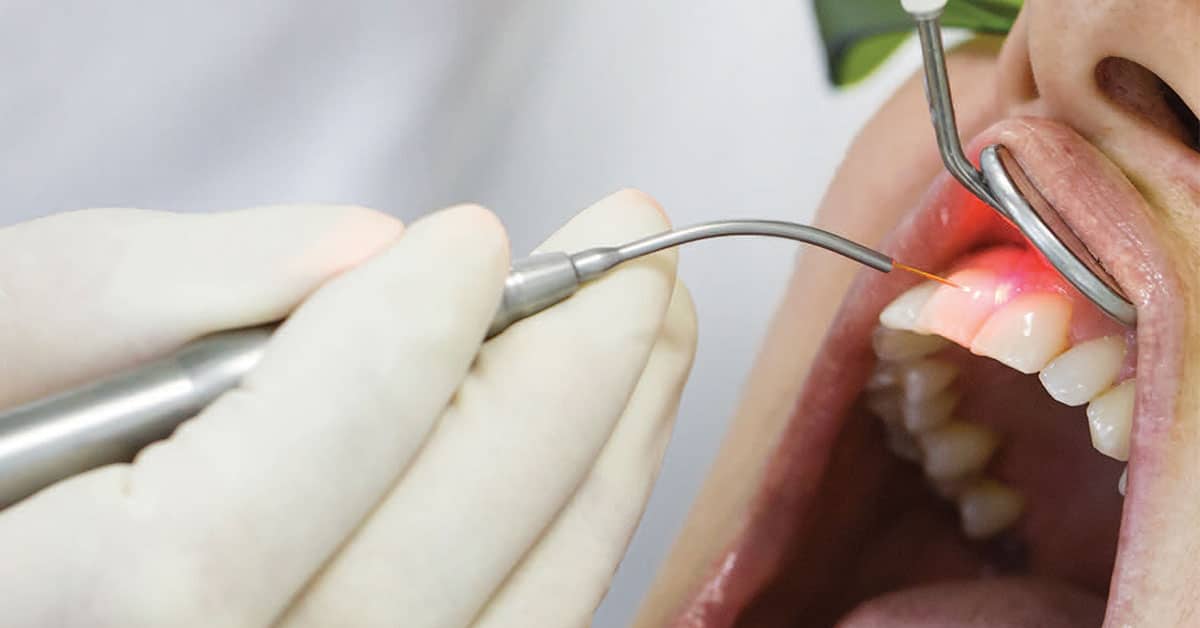
Using a scalpel or laser, your dental surgeon will remove any excess or overgrown gum tissue.
Once your dental surgeon removes the excess gum tissue, they’ll reshape your remaining gums. This ensures that your gums are proportionate to your teeth.
In some instances, your dental surgeon may need to reshape the underlying bone. To do this, they’ll need to make small incisions along your gum line.
Your dental surgeon will use stitches to close the incisions and slow bleeding. (If you’re having laser gingivectomy, they may skip this step.)
Your dental surgeon may place a soft putty over the surgical area to protect it. This dressing usually falls out on its own. If it doesn’t, your surgeon will remove it at your first follow-up appointment.
While you’ll want to avoid brushing too hard, you’ll still need to clean the surgical area. Brush gently and soak the area with an antibacterial mouthwash. Brush and floss all other teeth normally.
Your dental surgeon may prescribe antibiotics or pain medication. Be sure to take these exactly as directed. You can also take over-the-counter (OTC) pain relievers, such as acetaminophen or ibuprofen.
Place a cold compress on your outer jaw to help reduce swelling and inflammation.
Avoid hard, crunchy foods for at least one week. Instead, choose foods like yogurt, mashed potatoes, cooked veggies and scrambled eggs.
Do You Have Any Questions?